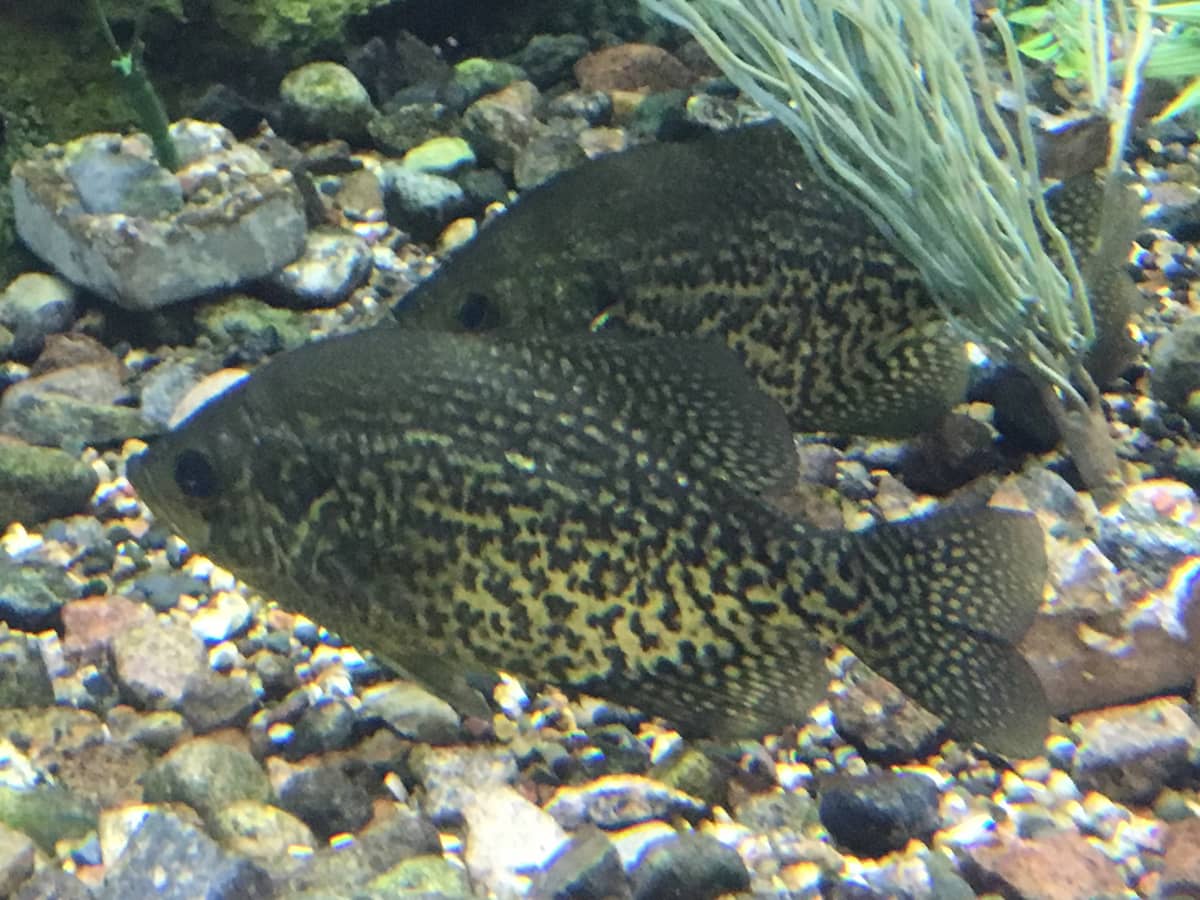
Crappies will relate tighter to the bottom or structure during bright summer days, but will be higher up as the sun sets and low-light conditions allow them to hunt minnows along weed edges. Simonson Photo.
By Nick Simonson
Into the back half of summer is when crappie fishing really gets fun. The evenings are warm, the fish are on the feed, and save for the occasional swatting of a mosquito, the outings are often both pleasant and productive. Targeting crappies in this stretch of the season requires some searching, but keying in on structure and food sources will help up the odds and the weight of the panfish basket filled with a few specks for a weekend fish fry.
Pointing the Way
Crappies are known rovers, traveling in schools while searching for their next meal, which typically comes during those low light periods of dawn and dusk. However, their movements aren’t unpredictable and with those large eyes, they’re on the lookout for the growing crop of minnows and insects that mid-summer brings. Oftentimes, that draws a hungry set of crappies to the places where their food resides, or at least locates adjacent to and the season’s established weedlines are a good starting point in a search for slabs. Locating the edge of a stand of weeds is just the beginning however.
Like any good fishing structure, the green wall of vegetation has its hot spots. These places are usually inside turns, points jutting out along a slight rise into deeper water, or perhaps even broken off islands of vegetation sitting a bit further out from the main stand. In these unique areas, which arise from spot to spot on a lake, crappies will hunt their prey, pinning them up against the edge, or ferreting them out from the gaps and small openings they hide in. Marking them and returning throughout the season will provide continued action.
Structured Settlements
Crappies also relate to deeper structure this time of year, and those bastions well below the surface also house smaller fish for them to chase, or insect life that provides immediate and easy sustenance. Sunken trees, man-made reefs, rock piles, and blow downs all create the living space that crappies relate to for cover and the occasional morsel of summer food. As daylight wanes, fish will typically rise from the deeper waters and ascend toward the surface from these deeper haunts to feed and get more active during those dawn and dusk hours. With a little sonar-watching, however, midday schools can be identified on or around those pieces of structure located in a bit deeper water. While it may often seem like crappies are just randomly scattered about in an area during summer, there’s often a vegetative or structural component to the equation that provides the answer to good fishing.
Order Up
The final element in the summer slab sequence is knowing what the fish are eating. Crappies often dine on small baitfish, particularly in the warm-weather months as the abundance of their prey grows exponentially. Where in the winter through the ice tiny jigs and smaller offerings of spikes or waxworms can convert, in the summer anglers are allowed to go much bigger, offering up both live bait and artificial lures that match the larger prey.
Utilizing fathead minnows from two to three inches in length on a #6 hook with a couple of split shots under a slip float is a fun rig to get kids in on the action. While casting sinking crankbaits like a Rapala Countdown in size 5 or smaller or a jig adorned with a spinner blade like a Beetle Spin or Road Runner will help cover water, locate the school, and adjust location accordingly. Tried-and-true crappie tubes in a variety of colors round out an ideal summer arsenal for slabs when presented on 1/32- and 1/16-ounce jig heads or insert jigs. These offerings mimic the flash and movement of minnows, and their larger sizes match summer prey to help convert more crappies this time of year.
Knowing where crappies are locating in summer, and what they’re eating are the two most important factors in finding these favorite fish. Putting the puzzle of structure and food sources together will help make angling for them more productive and keep the memories – and the fish fries – coming all season long.
